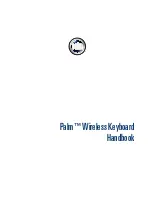
8
• Install the software
CHERRY Tools
.
You can configure all the functions of the
keyboard via the
Designer
included in the
software.
Operation instructions are included in the
direct help for the
CHERRY Tools
software. It
offers you information where you need it and
can be called up with
F1
.
6 Securing the keyboard
6.1 Fitting dimensions
The keyboard can be fitted from above or
below.
Cut-out measurements when fitting from
above (cut-out version B):
369.05 ±0.3 mm x 135.75 ±0.3 mm.
Cut-out measurements when fitting from
below (cut-out version A):
369.95 ±0.2 mm x 134.65 ±0.2 mm.
Dimensions
A diagram with the dimensions of
the keyboard and the position of the
screw domes can be found on the
final pages.
6.2 Mounting
The casing base contains three screw caps for
additional securing. Use screws with a wood/
plastic thread and a thread diameter of 2 mm.
When selecting the screw length, ensure that
the screw does not protrude into the screw cap
by more than 7.7 mm.
7 Installing the mounting
feet
• Slide both supplied mounting feet into the
receiving slots in the base of the casing until
locked in.
• To remove, press and hold the tab and then
pull the foot away towards the rear.
8 Maintenance and
servicing
The keyboard is maintenance-free. For
cleaning, use a lint-free cloth that has been
moistened with water and a mild detergent
(e.g. dishwashing liquid). Do not allow liquid to
enter the keyboard. Do not remove the key
caps. The use of aggressive liquids such as
alcohol or acids can damage the keyboard.
Trackball: Clean the ball at regular intervals.
Remove the ball by gently pressing the cover of
the trackball and turning counterclockwise.
Clean the optical sensor (the transparent lens
located under the ball) carefully, e.g. using a
cotton wool earbud.
9 Accessories
A flexible protective keyboard membrane
(WetEx
) to protect the keyboard against dust,
liquids and dirt is available for purchase.
10 RSI syndrome
RSI stands for "Repetitive Strain
Injury". RSI arises due to small
movements continuously repeated
over a long period of time.
Typical symptoms are discomfort in the
fingers or neck.
• Set up your workspace ergonomically.
• Position the keyboard and mouse in such a
manner that your upper arms and wrists
are outstretched and to the sides of your
body.
• Take several short breaks, with stretching
exercises if necessary.
• Change your posture often.
OPERATING MANUAL
CHERRY XS KEYBOARD FAMILY – Ultraslim Compact Keyboards
EN






































